Sentosa's Cable Cars at 50
As Singapore’s cable car system commemorates 50 years of service, we look back at the journey of this iconic attraction that has brought joy to many a rider.
By Joanna Tan
Back in 1974, Singapore was a very different place. At the time, Benjamin Sheares was president, Changi Airport didn’t exist, and colour TV was just getting started. That was what things were like when the first cable cars began operations here, shuttling people from Mount Faber to Sentosa.
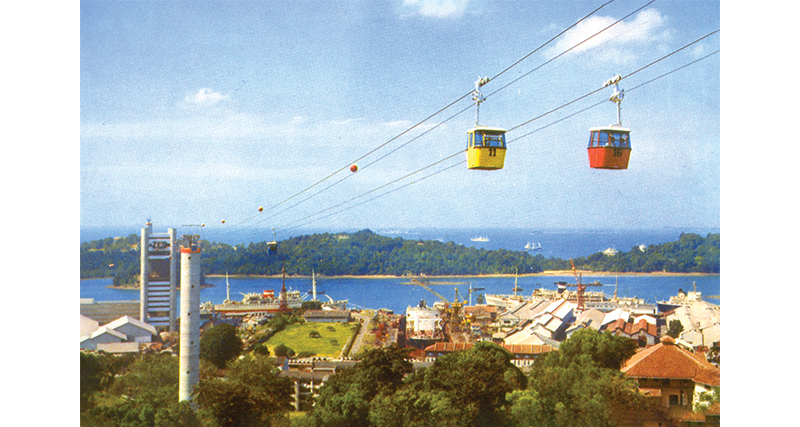
To people back then, it must have seemed futuristic, to be suspended some 60 m in the air, travelling across the sea to get to a small island that, only three years before, had been known as Pulau Blakang Mati. Even if one discounted the novelty of the ride, the cable car offered something quite unique: an unmatched view.
“We have a magnificent natural harbour, one of the finest in the world,” noted Deputy Prime Minister and Minister for Defence Goh Keng Swee when he officially opened the service on 15 February 1974. “A ride in a cable car – and I must not detain you longer than is necessary before you experience this for yourself – will provide the visitor with a magnificent panorama of the harbour. It will, I hope, at the same time make Singaporeans more conscious and more proud of their city state, whose economic life blood flows through this great port of ours.”1
After his speech, Goh and his wife rode in the bright yellow Cable Car No. 1 across the harbour to Sentosa and was all smiles as he looked down at the panoramic view below. At the end of the journey, he told the Straits Times that “he had enjoyed the ride very much and that it was as good as any he had taken abroad”.2
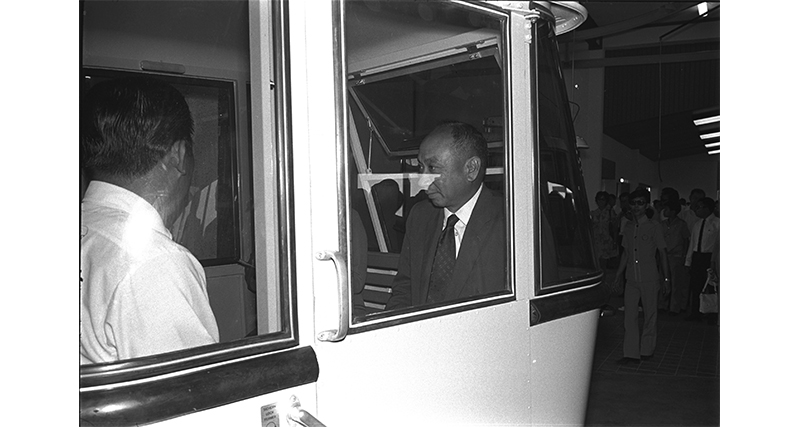
Such was the novelty of the ride that his endorsement was probably unnecessary. The next day, when it opened to the public, more than 1,000 people jostled for the opportunity to get into a cable car cabin and ride it for the 8.5 minutes it took to get from Mount Faber to Sentosa.3 They paid $4 for a round trip.4
By the end of 1974, close to 750,000 people had taken a ride on it and long snaking queues around the cable car station were a common sight.5 “Coming from a small town in Malaysia on a night train then, riding on the cable car was like an airplane ride for me back in the 1970s,” recalled Chan Sook Han.6
Of course, things were not always smooth sailing. Irene Chee was one of those who took a ride on the new attraction the year it opened. She was then expecting her second child, and was accompanied by her parents, husband and three-year-old daughter. “I was enjoying the beautiful view when the cable car stopped suddenly,” she recalled. “We didn’t know what was happening and my mother started praying. After a while, which seemed like an eternity, the car started moving again.” That was the first and last time that Chee, now a grandmother of six, set foot in the cable car.7
In the last 50 years, more than 60 million passengers have taken rides on the cable car. Besides playing host to visiting dignitaries and heads of state, the cable car has also been a venue for sky-high fine dining, Valentine’s Day dinners and even marriage proposals.
A Tourist Attraction
Interestingly, the cable car system owes its existence to the British military pullout from Singapore. Before the 1970s, Pulau Blakang Mati was used mainly as a British military base, though it was also home to a small population of non-military personnel.8 In 1967, Britain’s announcement that it would withdraw its troops from Singapore by the 1970s presented opportunities for the government to redevelop and repurpose the island for other uses.9 The following year, the government approved the recommendation by the Urban Renewal Department (URD; today’s Urban Redevelopment Authority) to turn the island into a tourist resort.10
As part of the planned transformation of the island, the URD conceived the cable car system as a tourist attraction as well as a mode of transportation to and from Sentosa.11 Officials visited Switzerland, Spain and Japan to obtain a working knowledge of the cable car systems in these countries.12 In July 1970, Singapore Cable Car Private Limited (SCC) was incorporated to manage and operate the cable car service.13 (SCC now comes under the management of Mount Faber Leisure Group Pte Ltd, a wholly owned subsidiary of Sentosa Development Corporation.14)
Building the Cable Car
The development of the 1.75-kilometre-long cable car system linking Mount Faber with Sentosa was awarded to Swiss company Von Roll at a contractual sum of $2.94 million in August 1971. The initial plan was for the company to also erect the station buildings and supporting towers but it was deemed too costly, and a decision was made for these structures to be designed and constructed by local firms.15
Three stations were constructed: on Mount Faber, at Jardine Steps (now known as HarbourFront Tower 2) and on Sentosa island. Two supporting towers were also built to support the station buildings – one on Seah Im Road and the other on Pulau Selegu.16 (Today, this island is no longer visible as together with Sarong Island, it was merged with Sentosa through a land reclamation project in the late 1970s.17) The cost of constructing the infrastructures and facilities for the system came up to about $5.8 million.18
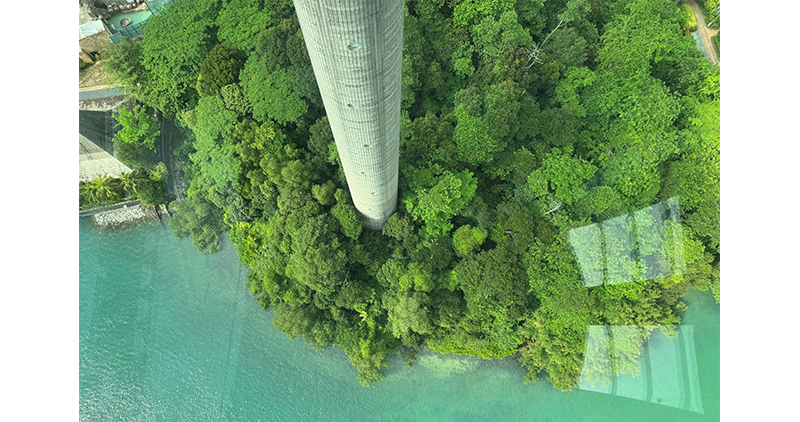
The cable car system was an immediate hit and within three years, it clocked more than 2.3 million riders. Besides tourists and Singaporeans from all walks of life, foreign dignitaries were also treated to a ride on the cable car. Lord Louis Mountbatten, the last Viceroy of British India, hopped into one in March 1974.19
The cable car was also featured on the popular TV series Hawaii Five-O. In an episode, which aired in 1979, Steve McGarrett, the main protagonist played by Jack Lord, is in hot pursuit of a villain, and this chase involved swinging precariously from the cable car wire.20
The Eniwetok Accident
For the first nine years, the system operated without any major incidents. But that streak of good fortune ended on Saturday, 29 January 1983. Shortly after 6 pm, the Eniwetok, an oil-drilling ship, broke free from its tugboats and drifted with the tide after unberthing from the nearby oil wharf in Keppel Harbour.
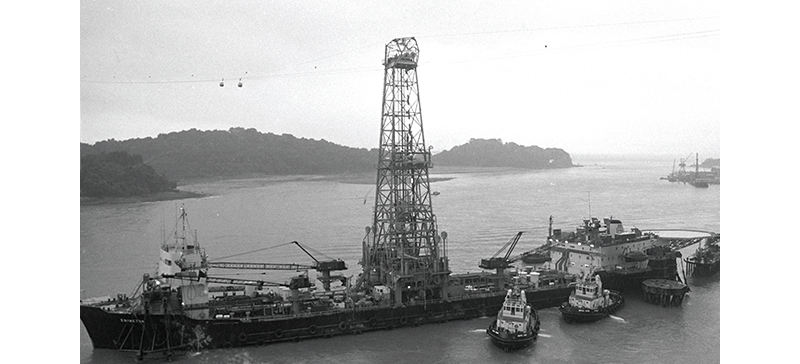
The top of its derrick (the tower) collided with the cableway causing two cable cars, numbers 20 and 35, to dislodge and fall 55 metres into the waters below. Two other cars were stranded precariously over land while another two were suspended over water.
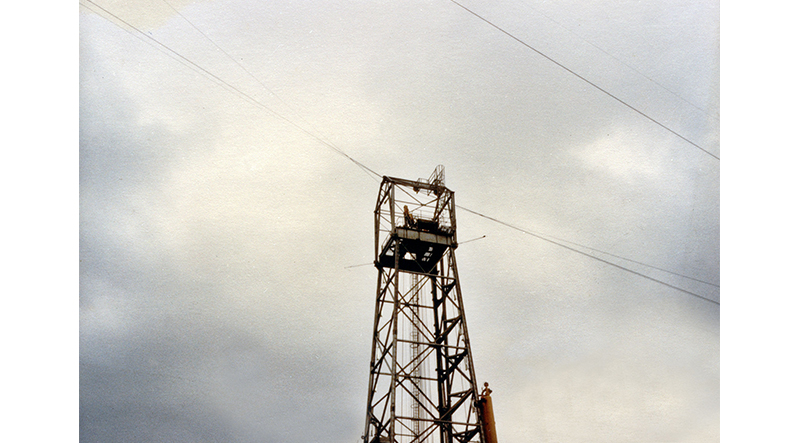
One of them, car number 26, was half-way across the harbour when the accident happened. The force of the collision shook the car violently and two adults and a 22-month-old toddler were flung out, leaving four more passengers in the cabin.21 Seven people died as a result of the accident, but another 13 remained trapped in four cabins suspended in the air.
The rescue team, led by Colonel Lee Hsien Loong, Chief of Staff of the Singapore Armed Forces (SAF) (he would later become prime minister), weighed various options to reach the trapped passengers. These included the use of a fire brigade snorkel ladder for the cars over land and a floating crane for the two over water; deploying commandos to crawl along the cableway and attach pulleys to the cables to lower the passengers individually; and using military helicopters in a mid-air rescue. As the ladder and crane were not tall enough, the team rescue decided on the helicopters to lower winchmen into the cable cars to bring the passengers up. The commandos were the backup plan in case this option failed.22
The air rescue was carried out at around 12.45 am on 30 January from two Bell 212 helicopters. Each helicopter hovered above a cable car while an SAF winchman was lowered down from a winch to the car with trapped passengers.
The windy conditions and the downdraft from the helicopter’s rotor blades made it hard for him to reach the cabin each time. However, once in, he quickly strapped one passenger to himself with a harness before both were hauled up to the helicopter. This was repeated until all 13 stranded passengers were saved.23 The mid-air rescue took about three hours and ended at around 3.45 am.
One of the pilots involved was Australian Geoffrey Ledger, 29, a flight lieutenant with the Royal Australian Navy who was in Singapore to train local air force personnel in search and rescue operations. “It was a dark, wet night, and it was some harrowing flying,” recalled Ledger who had volunteered to participate in the rescue operation. “It was a torturous time, the only area I had as a hover reference was one of the wires and listening to my winch operator telling me how close I was getting to the cables. My winchmen also had to pacify the survivors as they had been there for five to six hours completely not knowing what was going on. Some were badly injured. I could hear them screaming as we came close in the helicopters.”24
The winchman in Ledger’s helicopter was Selvanathan Selvarajoo, then a 21-year-old lance corporal. “I was swinging like a pendulum,” he recalled. “My safety cable scraped against the cable car cable, causing sparks which scared the trapped passengers.”25
The day after the collision, Prime Minister Lee Kuan Yew ordered a Commission of Inquiry into the causes leading to the tragedy. After a 55-day-hearing, the Commission submitted its report which cleared the SCC of responsibility but faulted a few other individuals, the Port of Singapore Authority, Keppel Shipyard, and the ship’s owner and management agent. The Commission also submitted recommendations to prevent similar occurrences. The new height restriction for vessels entering Keppel Harbour was reduced from 56.5 m to 52 m after the accident.26
After almost seven months of rigorous tests and repairs, the cable car service resumed operations on 15 August 1983.27
Lofty Winds of Change
While the accident was a major tragedy, the cable car system was eventually able to regain public trust. By 1990s, the cable car service was straining to accommodate the high ridership which could see around 8,000 passengers on weekends and public holidays. To cope with demand, the cars were replaced with 81 roomier cabins at a cost of $11 million in 1994. The system could now accommodate 1,400 passengers per hour, almost doubling the previous capacity.28
The system saw a major overhaul a decade and a half later. Between September 2009 and July 2010, the service was shut down and the old double-cable ropeway was replaced with a monocable one. In addition, it was raised to stand around 100 m above sea level. This accommodated the new fleet of 67 black-and-chrome cabins that were bigger, wheelchair-friendly and could take up to eight passengers each instead of the usual six.29
The opening of Resorts World Sentosa and Universal Studios in 2010 led to a spike in visitor numbers, prompting Sentosa Development Corporation to set up a cable car service that would run within the island between Merlion Plaza, Imbiah Lookout and Siloso Point. Officially opened on 14 July 2015, the 860-metre-long Sentosa Line can move some 1,600 people per hour in one direction with a waiting time of just 18 seconds.30
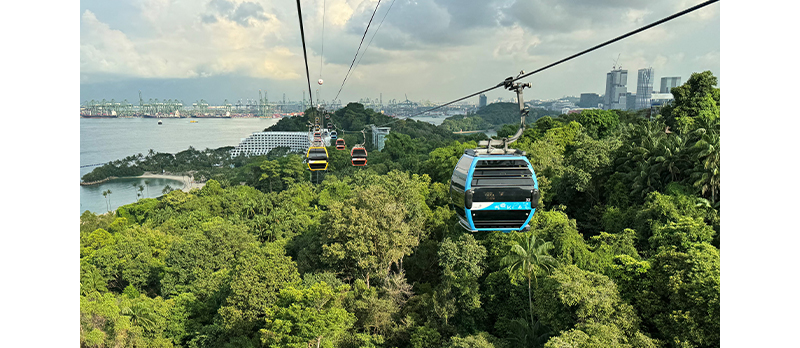
Soaring to New Heights
In March 2024, seven futuristic-looking cabins were added to the existing fleet of 67 on the Mount Faber Line connecting Mount Faber and Sentosa. Called SkyOrb cabins, these have a transparent glass bottom and were made exclusively for Singapore.31
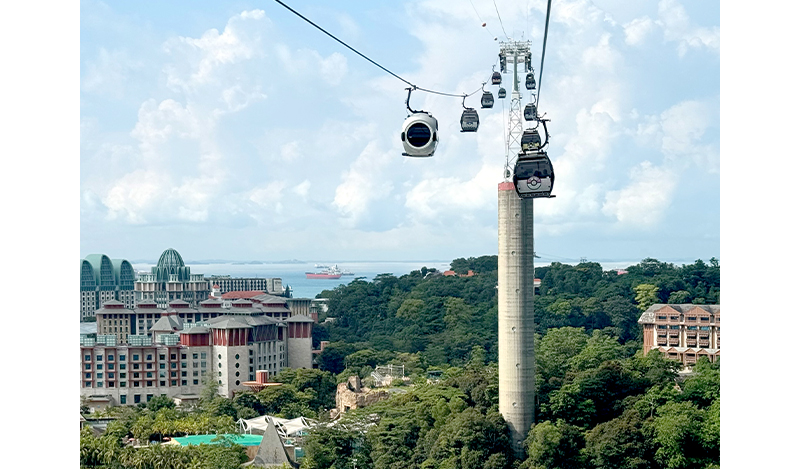
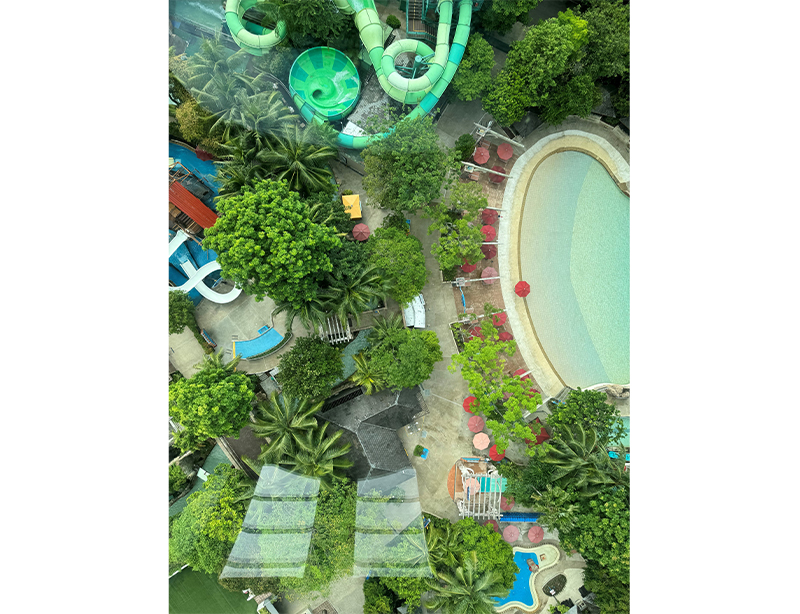
Over the last five decades, Sentosa’s cable cars have established themselves as a familiar landmark to those who pass along Telok Blangah Road. Yet despite the familiarity, it is still a major draw, offering as it does, a unique perspective of the harbour and Singapore’s coastline. The service’s commitment to constant upgrading and improvement will undoubtedly enable these cable cars to continue soaring.
Curriculum Development Institute of Singapore, "Hidup Bersama: Negara-ku Permai,” 30 April 1975, video, 19:44. (From National Archives of Singapore, accession no. 2010010617)
“Negara-ku Permai” ("My Country Is Lovely") is part of the Hidup Bersama ("Living Together") series for Primary 2 students. In this programme, the teacher brings the students to a few places of interest in Singapore such as Sentosa, Mount Faber, the Singapore Zoo and the Jurong Bird Park.
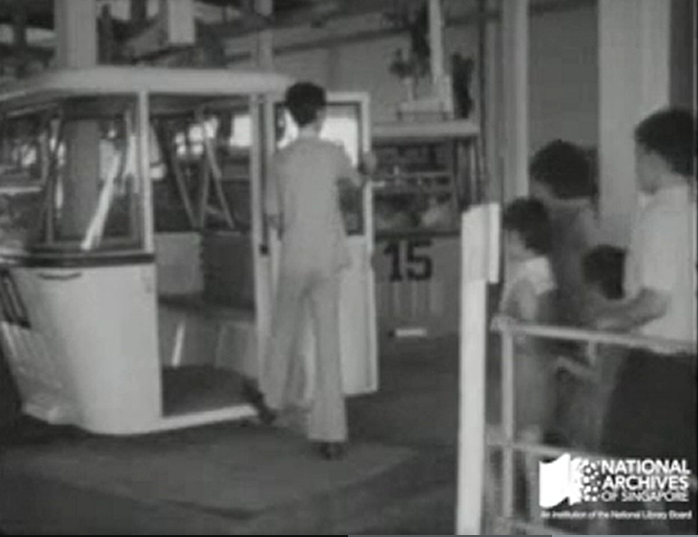
Singapore Broadcasting Corporation, "News Report on Launch of Second-generation Cable Cars,” 10 April 1994, video, 30:00. (From National Archives of Singapore, accession no. 1994000200)
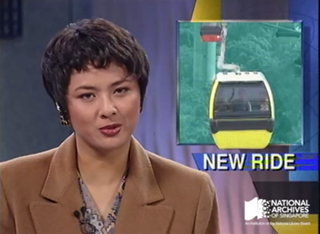
Mediacorp Pte Ltd, "News Report on Reopening of Cable Cars,” 20 July 2010, video, 30:00. (From National Archives of Singapore, accession no. 2010006569)
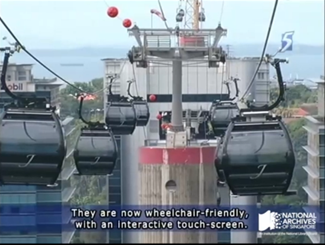
 Joanna Tan is a Senior Librarian with the National Library, Singapore, and works with the Singapore and Southeast Asia Collection. Her responsibilities include collection management and content development as well as providing reference and research services.
Joanna Tan is a Senior Librarian with the National Library, Singapore, and works with the Singapore and Southeast Asia Collection. Her responsibilities include collection management and content development as well as providing reference and research services.Notes
-
Goh Keng Swee, “Speech by Dr Goh Keng Swee, Deputy Prime Minister and Minister of Defence at the Official Opening Ceremony of the Cable Car System on Friday, 15th February, 1974 at 4.30 pm at Mount Faber,” transcript, National Archives of Singapore (document no. PressR19740215a) ↩
-
Bailyne Sung, “Cable Car No 1 Takes Goh Over to Sentosa,” Straits Times, 16 February 1974, 1. (From NewspaperSG) ↩
-
“First Major Project in Sentosa Resort Completed,” Straits Times, 15 February 1974, 8; “1,000 Take Cable Car Rides on First Day,” Straits Times, 17 February 1974, 4. (From NewspaperSG) ↩
-
“‘Don’t Lose Faith’ Call by Goh,” Straits Times, 16 February 1974, 7. (From NewspaperSG) ↩
-
“Singapore Orders a Dozen More Cable Cars,” New Nation, 10 April 1974, 3. (From NewspaperSG); Marcus Ng Fu Chuan, A Ride to Remember: The Story of Mount Faber and Singapore Cable Car (Singapore: Mount Faber Leisure Group, 2012), 38. (From National Library, Singapore, call no. RSING 915.957 NG-TRA]) ↩
-
Lim Yann Ling, “A Ropeway of Special Memories,” Straits Times, 1 March 2014, 3. (From NewspaperSG) ↩
-
Correspondence with Irene Chee, 5 April 2024. ↩
-
National Heritage Board, “Sentosa: A Slice of Paradise: From Military Base to Leisure Island,” Roots, last updated 25 October 2023, https://www.roots.gov.sg/stories-landing/stories/sentosa/story. ↩
-
National Heritage Board, Sentosa Heritage Trail: A Companion Guide (Singapore: National Heritage Board, 2022), 51–53, https://www.roots.gov.sg/-/media/Roots/Files/Sentosa-Heritage-Trails/NHB-Sentosa-Trail_Companion-Guide.ashx. ↩
-
National Heritage Board, Sentosa Heritage Trail, 55. ↩
-
“Buildings Designed With Local Skills,” Straits Times, 15 February 1974, 11; “Work on Cable Car Wire Installation Starts Today,” Straits Times, 21 October 1973, 7. (From NewspaperSG); Ng, A Ride to Remember, 28. ↩
-
“Faber-Sentosa Car Link Will Be Bi-Cable,” New Nation, 10 May 1973, 5. (From NewspaperSG); “Buildings Designed With Local Skills.” ↩
-
Ng, A Ride to Remember, 28; “Buildings Designed With Local Skills”; Chia Poteik, “$2.9 Million Cable Car Contract,” Straits Times, 14 August 1971, 19. (From NewspaperSG) ↩
-
“Overview,” Sentosa Development Corporation, last updated 26 October 2023, https://www.sentosa.gov.sg/who-we-are/overview/. ↩
-
“Buildings Designed With Local Skills”; Chia, “$2.9 Million Cable Car Contract.” ↩
-
“Faber-Sentosa Car Link Will Be Bi-Cable”; “Work on Cable Car Wire Installation Starts Today”; Teresa Ooi, “Swiss Experts Will Install Cable Cars,” New Nation, 5 May 1973, 3; “First Major Project in Sentosa Resort Completed,” Straits Times, 15 February 1974, 8. (From NewspaperSG) ↩
-
“Two Islands to Link with Sentosa,” Straits Times, 2 February 1978, 28. (From NewspaperSG) ↩
-
Ng, A Ride to Remember, 28. ↩
-
Ng, A Ride to Remember, 38; “Lord M Takes a Cable Car to Sentosa,” New Nation, 7 March 1974, 3. (From NewspaperSG) ↩
-
“Stand-ins Take Over for Five-0 Cable Car Stunt,” Straits Times, 13 May 1978, 6; Bailyne Sung, “Year of the Horse Leaves Five-O Fans High and Dry,” Straits Times, 20 January 1979, 2. (From NewspaperSG) ↩
-
Yong Li Xuan, “Sentosa Cable Car Tragedy: 40 Years On,” Straits Times, 29 January 2023, https://www.straitstimes.com/singapore/sentosa-cable-car-tragedy-he-still-has-flashbacks-of-his-family-falling-out-of-cable-car; Chia Chong Jin, “Daring Rescue: 1983 Sentosa Cable Car Accident,” Pioneer, 27 January 2023, https://www.defencepioneer.sg/pioneer-articles/daring-rescue–1983-sentosa-cable-car-accident; Marine Department (Singapore), Report of the Commission of Inquiry into the Collision of the Drillship Eniwetok with the Sentosa Cableway on 29 January 1983 (Singapore: Marine Department, 1983), 33. (From National Library Online) ↩
-
Chia, “Daring Rescue”; Conrad Raj, “Using Commandos,” Straits Times, 6 February 1983, 18; “Four Options, Then the Go-Ahead for Choppers,” Straits Times, 31 January 1983, 8. (From NewspaperSG) ↩
-
“Plucked From the Jaws of Death,” Straits Times, 31 January 1983, 1. (From NewspaperSG) ↩
-
Cynthia Choo and Albert Wai, “Aussie Hero of Sentosa Cable Car Rescue Recalls ‘Harrowing’ Night,” Today, 13 October 2016, 8. (From NewspaperSG) ↩
-
Yong Li Xuan, “Sentosa Cable Car Tragedy: Helicopter Co-pilot in Rescue Mission was Only 19,” Straits Times, 29 January 2023, https://www.straitstimes.com/singapore/sentosa-cable-car-tragedy-helicopter-co-pilot-in-rescue-mission-was-only-19. ↩
-
Philip Lee, et al., “PM Orders Full Inquiry,” Straits Times, 31 January 1983, 1. (From NewspaperSG); Marine Department (Singapore), Report of the Commission of Inquiry into the Collision of the Drillship Eniwetok with the Sentosa Cableway on 29 January 1983, 1; “The Straits Times Says Thundering But Fair Report,” Straits Times, 16 January 1984, 16. (From NewspaperSG) ↩
-
Tsang So-Yin, “Cable Cars Roll Again,” Straits Times, 16 August 1983, 1. (From NewspaperSG) ↩
-
Ng, A Ride to Remember, 45. ↩
-
Jessica Lim, “Cable Car Rides Shut Down for Upgrading Works,” Straits Times, 11 September 2009, 43; “Fresh Look,” The New Paper, 21 July 2010, 8. (From NewspaperSG) ↩
-
Jessica Lim, “Sentosa to Build New Cable Car Line,” Straits Times, 14 June 2012, 2–3. (From NewspaperSG) ↩
-
Chin Soo Fang, “Futuristic Cabins to Join Singapore Cable Car’s Fleet As It Turns 50,” Straits Times, 3 December 2023, https://www.straitstimes.com/singapore/futuristic-fleet-to-join-s-pore-s-cable-cars-in-2024-as-it-turns-50. ↩

